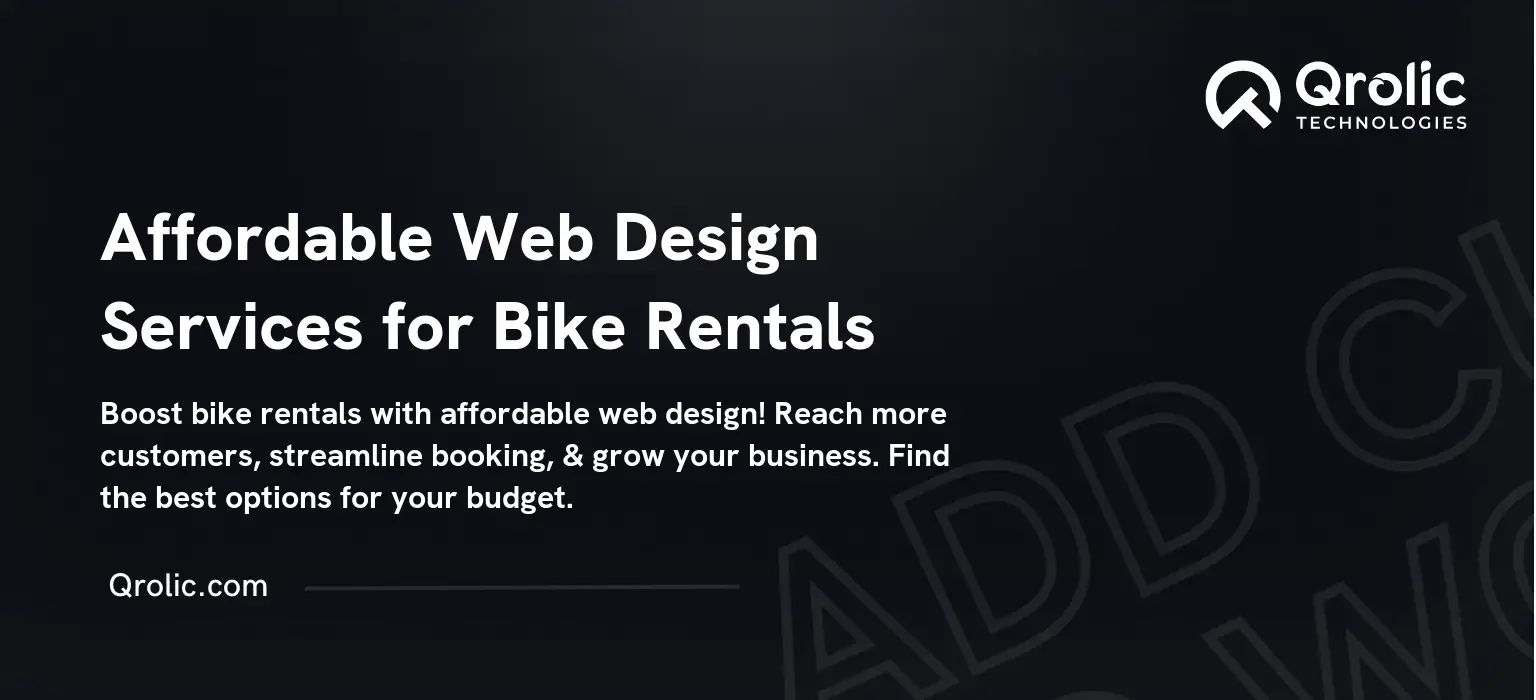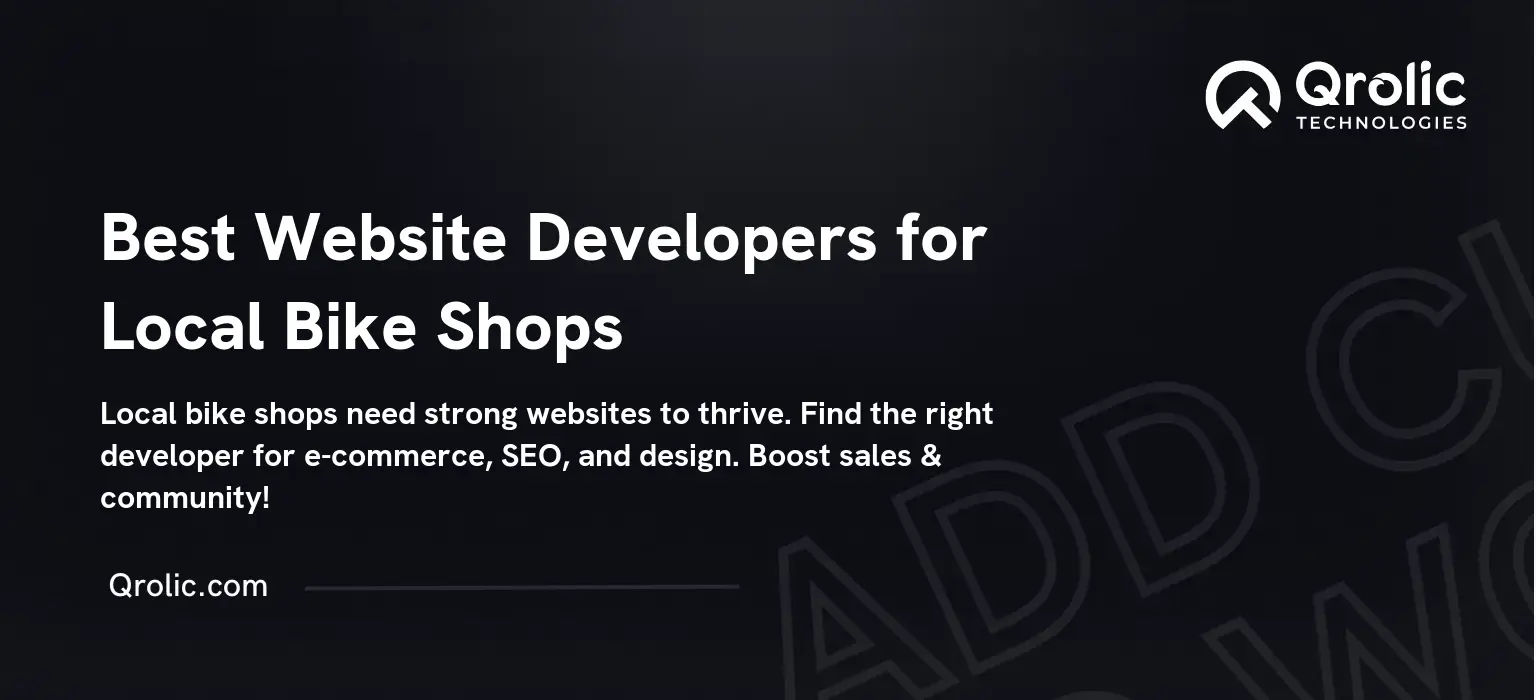Quick Summary:
- A professional website is vital for bike rental growth.
- Essential features include easy online booking and mobile design.
- Affordable web design options fit various needs and budgets.
- Choose a service by defining your goals and comparing options.
Table of Contents
- Why Your Bike Rental Business Needs a Killer Website
- The Power of Online Presence
- The Downside of Ignoring Your Website
- What Makes a Great Bike Rental Website?
- Core Features of a High-Converting Bike Rental Site
- Enhanced Features That Elevate Your Website
- Affordable Web Design: What Are Your Options?
- 1. DIY Website Builders
- 2. WordPress with Pre-Built Themes
- 3. Working with Freelance Web Designers
- 4. Agency Web Design Services
- The Cost of Affordable Web Design
- Factors Influencing the Cost of Web Design
- A Breakdown of Potential Costs
- Important Considerations for Budgeting
- How to Choose the Right Web Design Service
- 1. Define Your Needs and Goals
- 2. Research and Evaluate Your Options
- 3. Consider Your Technical Skill Level
- 4. Communicate Your Vision and Needs Clearly
- 5. Make a Decision and Get Started
- Case Study: How a Great Website Improved a Bike Rental Business
- Before: The Challenges
- The Transformation: The Solution
- The Results: The Impact
- Key Takeaways from SunCycle’s Success
- Why Choose Qrolic Technologies for Your Bike Rental Website?
- Our Expertise in Bike Rental Website Design
- What We Offer
- Our Process
- Let Qrolic Technologies Be Your Partner
Why Your Bike Rental Business Needs a Killer Website
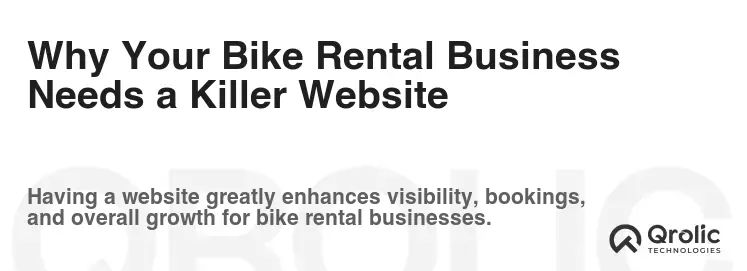
In today’s digital age, a website is more than just an online brochure; it’s the beating heart of your business, especially for a bike rental service. Think of it as your 24/7 storefront, ready to welcome customers at any time of day or night. But why is a website so crucial for your bike rental business, and what makes a good one stand out? Let’s dive in.
The Power of Online Presence
A website acts as your primary point of contact for potential customers. It’s where they go to discover what you offer, learn about pricing, and ultimately, book their rentals. Without a robust online presence, you’re missing out on a huge chunk of potential business. Here’s how a website boosts your bike rental service:
- Increased Visibility: In a crowded market, a website helps you stand out. It allows you to be found through search engines like Google, drawing in customers who are actively searching for bike rental services in your area.
- Convenient Booking: Forget phone calls and back-and-forth emails. A well-designed website allows customers to browse your bike selection, check availability, and book online with just a few clicks.
- Showcase Your Offerings: High-quality photos and detailed descriptions of your bikes and rental packages allow customers to see exactly what they are getting, building trust and encouraging rentals.
- Build Credibility: A professional, well-designed website lends credibility to your business. It shows you are serious, reliable, and care about your customers’ experience.
- Expand Your Reach: A website transcends geographic boundaries. You can attract customers beyond your immediate vicinity, reaching tourists and visitors who are not familiar with your business otherwise.
The Downside of Ignoring Your Website
On the flip side, neglecting your website or having a poorly designed one can have serious negative consequences for your bike rental business:
- Lost Revenue: Customers may opt for competitors with easier-to-use websites, meaning you’re losing out on potential income.
- Poor Customer Experience: A clunky, difficult-to-navigate site leads to frustration. Customers may abandon the booking process and look elsewhere.
- Damage to Your Reputation: An unprofessional website can make your business look unreliable. It might even raise questions about the quality of your bikes and service.
- Missed Marketing Opportunities: A website is a vital tool for marketing. Without one, you’re missing out on the chance to promote your services, offer discounts, and connect with your audience.
- Reduced Competitive Edge: In the digital landscape, your website is a crucial part of your competitive advantage. If you don’t have one, you’re at a significant disadvantage.
A strong online presence is no longer an option – it’s a necessity. Investing in a quality website is investing in the growth and success of your bike rental business.
What Makes a Great Bike Rental Website?
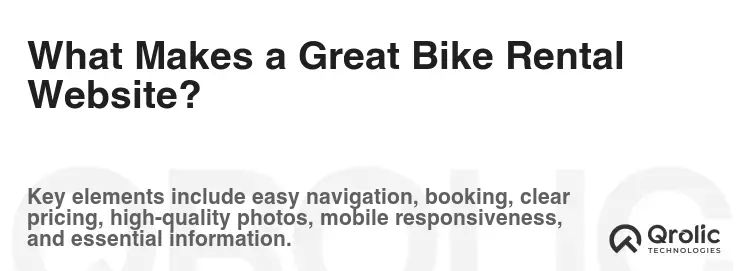
Okay, so you understand the importance of having a website. But what exactly makes a website great for a bike rental business? It’s more than just looking pretty; it needs to be functional, user-friendly, and designed to convert visitors into customers. Let’s break down the key components:
Core Features of a High-Converting Bike Rental Site
- Easy Navigation: The site must be intuitive and simple to navigate. Customers should be able to find what they need quickly and without frustration. Clear menus and logical site structure are essential.
- Mobile-Friendliness: A large number of users access the internet via mobile phones. Your website must be responsive, adapting seamlessly to different screen sizes, ensuring a great experience for all users.
- Online Booking System: This is crucial. Customers need to be able to browse your bikes, see availability, select dates, and book online securely and easily. Integrated payment gateways are a must.
- High-Quality Images: Showcase your bikes! Use professional-grade, high-resolution photos from multiple angles so customers can see exactly what they’ll be riding.
- Detailed Product Descriptions: Provide clear and accurate descriptions of each bike, including size, type, and features. This helps customers choose the right bike for their needs.
- Pricing Transparency: Make your pricing clear and easy to understand. Avoid hidden fees and make sure any additional costs are clearly stated upfront.
- Location Maps and Information: Make it easy for customers to find you! Include clear maps and directions, as well as operating hours and any other location-related information.
- Customer Reviews and Testimonials: Build trust and credibility with customer reviews and testimonials. This helps potential customers feel confident in choosing your service.
- Contact Information: Make it easy for customers to reach you with questions or concerns. Prominent contact information, including phone number and email address, is essential.
- Clear Call to Actions (CTAs): Use compelling CTAs like “Book Now,” “Rent a Bike,” or “Explore Our Bikes” to guide users towards making a rental.
Enhanced Features That Elevate Your Website
Beyond the basics, consider incorporating these features to provide an even better user experience:
- Live Chat: Offer live chat support to assist customers in real-time. This can be invaluable in guiding them through the booking process and answering any questions immediately.
- Multilingual Support: If you cater to an international audience, offering your website in multiple languages can greatly expand your reach.
- Blog or Resources Section: Create valuable content related to cycling, local trails, or events. This not only helps with SEO but also engages your audience and positions you as an expert.
- Promotional Offers: Highlight special discounts, packages, and seasonal deals to incentivize bookings.
- Social Media Integration: Make it easy for customers to share your business with their friends on social media. Link your social media pages prominently.
- FAQ Section: Answer common questions about your service to save time and provide helpful information to your customers.
- User Profiles: Allow customers to create profiles where they can easily track their bookings, preferences, and history.
Creating a website with these features not only improves user experience but also enhances your brand image, helps you attract more customers, and ultimately boosts your revenue.
Affordable Web Design: What Are Your Options?
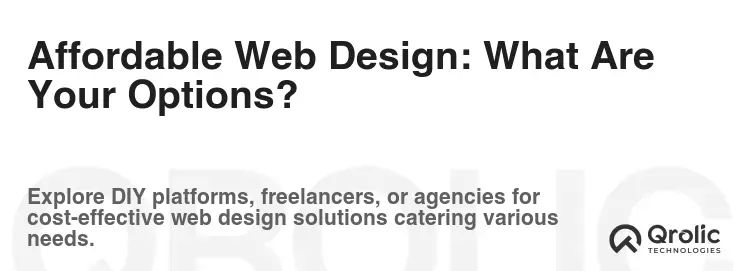
Developing a professional website can sometimes feel like a daunting task, especially when budget is a constraint. But the good news is, you don’t need to break the bank to get a great website for your bike rental business. There are several affordable web design options available, catering to varying needs and budgets:
1. DIY Website Builders
What they are: These are platforms like Wix, Squarespace, and Weebly that offer drag-and-drop interfaces, making it easy for anyone to build a website without coding knowledge.
Pros:
- Cost-Effective: Generally, these platforms are more affordable than hiring a professional web designer.
- Easy to Use: The drag-and-drop interface allows you to build and customize your website without any coding skills.
- Pre-Designed Templates: These platforms offer numerous templates, making it easy to create a visually appealing website quickly.
- Flexibility: They often include a wide range of features, including blog functionality, contact forms, and basic e-commerce tools.
Cons:
- Limited Customization: While you can customize templates, your options might be limited compared to a bespoke website.
- Performance Issues: The sheer volume of features on these platforms can sometimes slow down your website, affecting the user experience.
- Less Control: You don’t have complete control over your website’s backend, potentially leading to limitations in the future.
- Scalability: DIY builders are not always the best option if you have specific needs that go beyond their offerings or if you expect rapid growth.
Best for: Small bike rental businesses with limited budgets who want a simple and quick website solution.
2. WordPress with Pre-Built Themes
What it is: WordPress is a popular content management system (CMS) that is free and open-source. You can use it to build a wide variety of websites by using themes and plugins.
Pros:
- Highly Customizable: With thousands of themes and plugins available, WordPress offers significantly more flexibility and customization than most DIY builders.
- SEO-Friendly: WordPress is inherently search engine-friendly, giving you a boost in search engine rankings.
- Scalability: WordPress can easily grow with your business and handle more advanced features and functionalities as your needs change.
- Large Community Support: With a massive community of developers, you can easily find resources and solutions to any problems you might encounter.
- E-commerce Integration: With plugins like WooCommerce, you can easily integrate powerful booking and e-commerce functionality into your WordPress site.
Cons:
- Steeper Learning Curve: While easier than coding from scratch, WordPress has a slightly steeper learning curve than DIY builders.
- Maintenance Required: WordPress requires regular updates and maintenance to keep your site secure and running smoothly.
- More Technical Knowledge: Customizing themes and plugins may require some technical understanding.
- Hosting Costs: While WordPress itself is free, you will need to pay for hosting and a domain name.
Best for: Bike rental businesses that require greater flexibility and customization, want to focus on SEO, and are willing to invest some time in learning or hiring someone to maintain the site.
3. Working with Freelance Web Designers
What it is: You hire a freelance designer who works on your project to create a website tailored to your specific needs and requirements.
Pros:
- Customized Design: A freelance designer can create a unique website that perfectly matches your brand and vision.
- Personalized Attention: You’ll have direct communication and a close working relationship with your designer.
- More Control: You can work with the designer to incorporate specific features and functionalities that are essential to your bike rental business.
- Scalability: They can tailor the website so that it can scale as your business grows.
Cons:
- Costly: Hiring a freelancer is usually more expensive than using DIY builders or pre-built themes.
- Finding the Right Designer: It can be time-consuming to find a reliable, experienced freelancer who is a good fit for your project.
- Variable Quality: The level of skill and expertise can vary widely between freelancers.
- Time Commitment: Working with a freelancer often requires more time and input from your side.
Best for: Bike rental businesses that need a completely unique, customized website with special features and are willing to invest in a more personal design process.
4. Agency Web Design Services
What it is: You hire a professional web design agency that offers a full range of web design and development services, usually including design, coding, hosting, and support.
Pros:
- Expertise: Agencies have a team of experienced professionals with diverse skill sets, ensuring high-quality design and development.
- Full Range of Services: You can get a complete package, including design, development, and ongoing maintenance.
- Professional Results: Agencies typically deliver highly professional and polished websites that can significantly enhance your brand image.
- Time Savings: They handle everything, saving you time and hassle.
Cons:
- Most Expensive Option: Agencies are typically the most expensive of all web design options.
- Less Direct Control: You may have less direct control over the design and development process.
- Communication Can Be slow: If the agency has many clients, communication could be less prompt than working with a freelancer.
- Potentially Overkill: Some smaller businesses may not need all the features offered by an agency, making it an unnecessary cost.
Best for: Larger bike rental businesses that require sophisticated, high-end websites and are looking for a comprehensive, professional solution.
Understanding the different website design options available, along with their pros and cons, is critical to making an informed decision that fits your budget and business goals.
The Cost of Affordable Web Design
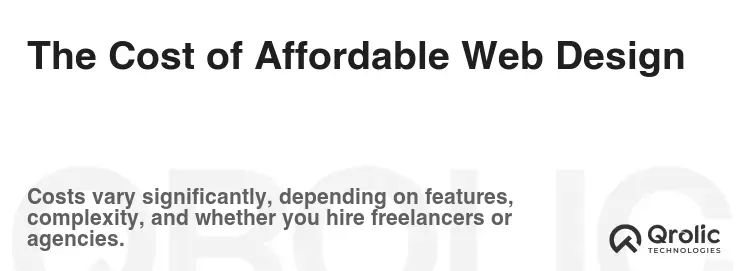
Let’s talk specifics. What does “affordable” really mean when it comes to web design for a bike rental service? The cost can vary widely depending on several factors, and having a clear understanding of these costs is essential for effective budgeting.
Factors Influencing the Cost of Web Design
- Complexity: Simple websites with a few basic pages will generally cost less than a more complex site with advanced features such as booking systems, live chat, and e-commerce integration.
- Customization: The level of customization required has a direct impact on costs. Using pre-built themes will be more affordable than creating a fully custom design.
- Functionality: Specific features like booking systems, multiple languages, online payment processing, and complex inventory management will add to the development costs.
- Design Quality: The amount of effort put into design directly influences the price. A basic design is more affordable than a high-end, custom-made visual experience.
- Number of Pages: Each page on your website represents a separate design and development effort. Generally, more pages translate to higher costs.
- SEO and Marketing: If you need help with search engine optimization and marketing services to promote your site, this will also factor into the overall cost.
- Ongoing Maintenance: It’s not just about the initial design. Ongoing website maintenance, updates, and technical support also influence the long-term cost.
A Breakdown of Potential Costs
Here’s a rough estimate of costs based on the different options we discussed:
- DIY Website Builders:
- Monthly Subscription: $10 – $40 per month, depending on the plan and features needed.
- Initial Setup Cost: Minimal, mainly the time to build the website.
- Total Cost: Typically less than $500 per year.
- WordPress with Pre-Built Themes:
- Hosting: $5 – $30 per month, depending on the hosting provider and plan.
- Theme: Free – $100+ for premium themes.
- Plugins: Free – $50+ per plugin (can be recurring cost for premium plugins).
- Potential Development: $50 – $100+ per hour if you need help with customization.
- Total Cost: From $100 per year up to $1000, potentially much more with extensive customisations.
- Freelance Web Designers:
- Project Fee: $500 – $5,000+, depending on the scope of the project.
- Hourly Rate: $25 – $100+, depending on experience.
- Total Cost: Varies greatly based on project needs and complexity, generally ranges from $500 upwards.
- Agency Web Design Services:
- Project Fee: $2,000 – $20,000+, depending on the agency and scope of work.
- Monthly Retainer: Can be $500+ per month for ongoing services.
- Total Cost: Generally above $2,000 and can go up to 10,000+ for a comprehensive project.
Important Considerations for Budgeting
- Initial Cost vs. Long-Term Value: Don’t focus solely on the initial costs. Consider the long-term value of a well-designed website in terms of increased revenue and customer satisfaction.
- Hidden Costs: Always ask about potential hidden costs such as hosting fees, domain registration fees, SSL certificates, and ongoing maintenance fees.
- Scalability: Choose an option that can scale as your business grows, without requiring a complete website overhaul in a few years.
- Value for Money: Look for a solution that offers the best value for your money, meaning it delivers the needed features and functionality without breaking your budget.
- Get Quotes: Always get quotes from multiple providers before making a decision. Don’t hesitate to negotiate and try to find the best deal for your needs.
Budgeting effectively for your website is about balancing your financial constraints with the features, quality, and functionality you need to drive your bike rental business forward.
How to Choose the Right Web Design Service
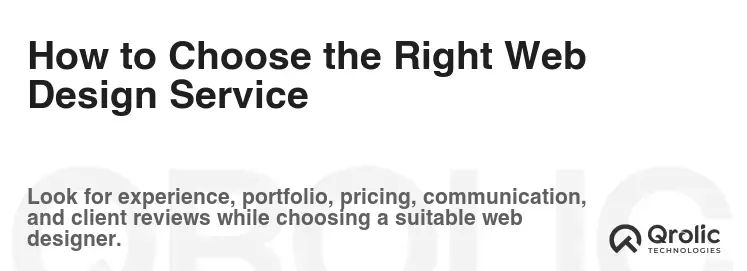
Choosing the right web design service is a crucial decision that can significantly impact your business. It’s not just about finding the cheapest option; it’s about finding the best fit for your needs, budget, and long-term goals. Here’s a step-by-step guide to help you make the right choice:
1. Define Your Needs and Goals
- What Do You Need Your Website to Do? Be specific. Do you need a simple information website, a booking platform, or a fully-fledged e-commerce site?
- What Are Your Key Objectives? Do you want to increase bookings, improve customer experience, or boost your brand awareness?
- What’s Your Budget? Be realistic about what you can afford and what value you expect in return.
- What’s Your Timeline? Do you need a website quickly, or do you have more time for development?
- Do You Need Ongoing Support? Will you need someone to maintain your website, update content, and provide technical assistance?
2. Research and Evaluate Your Options
- Explore Different Web Design Options: Based on your needs and budget, research the different web design options discussed earlier (DIY builders, WordPress, freelance designers, agencies).
- Read Reviews and Testimonials: Look for feedback from past clients to evaluate the reliability and quality of different service providers.
- Check Their Portfolios: Review the past projects of potential designers or agencies to see if their design style and expertise match your expectations.
- Ask for Recommendations: Seek referrals from your business contacts, colleagues, and friends.
- Compare Pricing and Services: Gather quotes from different providers and compare them, taking into account the range of services included.
3. Consider Your Technical Skill Level
- Can You Build Your Own Website? If you have some tech skills, you might be comfortable using a DIY builder or WordPress with pre-built themes.
- Do You Need Professional Help? If you lack the technical skills or time to build the site, you may need to hire a freelance designer or an agency.
- How Much Control Do You Want? Do you want to be heavily involved in the design process or prefer to delegate most tasks to a professional?
- Are You Comfortable With Maintenance? Consider if you have the skills and time to manage your website once it’s launched or if you need ongoing support.
4. Communicate Your Vision and Needs Clearly
- Be Detailed in Your Brief: Clearly outline your expectations, specific requirements, and aesthetic preferences.
- Provide Examples: If you have websites you admire, share them to help your designer understand your style and taste.
- Ask Questions: Make sure you understand the process, cost structure, and timelines from the beginning.
- Maintain Open Communication: Keep an open communication channel with your chosen provider to make sure the project remains on track and addresses any concerns you have along the way.
5. Make a Decision and Get Started
- Trust Your Gut: Choose the provider that you feel most comfortable with and that you believe will deliver the best results.
- Sign a Contract: Ensure the agreement is clear, includes all the agreed upon terms, timeline, and costs, as well as any expectations regarding revisions and maintenance.
- Stay Involved: Stay engaged throughout the design and development process to ensure the project aligns with your vision and meets your goals.
- Test and Launch: Before launching, ensure you thoroughly test every function of the website on different devices and browsers to ensure that the user experience is seamless.
Choosing the right website design service is an investment in your business. By carefully considering your needs, researching your options, and communicating effectively, you can find a partner who can help your bike rental business thrive online.
Case Study: How a Great Website Improved a Bike Rental Business
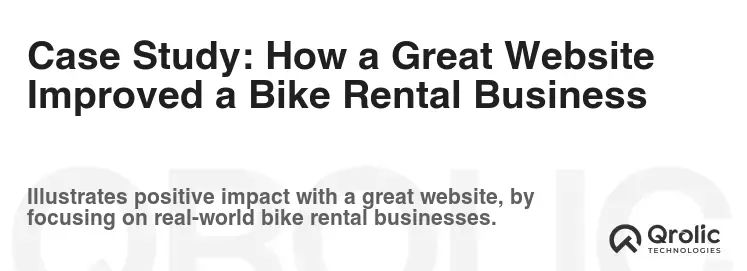
Let’s look at a real-world example of how a well-designed website transformed a bike rental business. Imagine “SunCycle Rentals,” a small, local bike rental shop that used to rely solely on word-of-mouth and walk-in customers. They were struggling to compete with larger businesses and their online presence was minimal.
Before: The Challenges
- Limited Reach: Their customer base was restricted to local residents and tourists who physically walked by their shop.
- Inefficient Booking Process: They handled bookings via phone calls and in-person, which was time-consuming and often led to errors.
- Lack of Transparency: They had no online information about their bikes, pricing, or availability, forcing customers to call for basic details.
- Poor Brand Image: Their lack of a professional website made them look less credible compared to their competitors.
The Transformation: The Solution
SunCycle Rentals decided to invest in a professional website, working with a freelance web designer to create a site specifically tailored for their needs. Here’s what they did:
- Intuitive Design: They created an easy-to-navigate website with clear menus and a user-friendly layout.
- Mobile Optimization: Their site was designed to be fully responsive and work perfectly on all devices.
- Online Booking System: They integrated a system allowing customers to browse their bikes, check availability, select dates, and book online.
- High-Quality Images: They included professional photos of their bikes, showcasing their quality and variety.
- Clear Pricing: They presented clear pricing and avoided hidden fees to build trust.
- Location Map: They added a Google map to make it easy for customers to find their location.
- Customer Reviews: They integrated a review system to show positive feedback from satisfied customers.
- SEO Optimization: They worked with their designer to optimize the website for search engines, increasing their visibility to prospective customers.
The Results: The Impact
The new website transformed SunCycle Rentals business in several important ways:
- Increased Bookings: Online booking made it much easier for customers to reserve bikes, leading to a significant increase in bookings.
- Expanded Reach: They started attracting a broader customer base, including tourists and visitors from different regions.
- Improved Customer Experience: Customers could find all the information they needed online, book at their convenience, and were generally more satisfied with the service.
- Enhanced Brand Image: The professional website improved SunCycle’s credibility and helped them compete more effectively.
- Increased Revenue: Increased bookings and improved customer experience translated into higher overall revenue.
- Time Savings: Automation of the booking process freed up their time, allowing them to focus on customer service and business development.
Key Takeaways from SunCycle’s Success
- A professional website is crucial: It’s not just a cost; it’s an investment in your business’ growth.
- Online booking is essential: For a bike rental business, online booking is a must-have, as it provides convenience and efficiency for both you and your clients.
- User experience is key: Your site must be easy to navigate, mobile-friendly, and offer a seamless user experience.
- Quality matters: High-quality images, clear pricing, and customer reviews boost credibility and encourage customers to book your services.
- SEO is important: optimizing your website for search engines will increase your visibility and attract more potential clients.
SunCycle Rentals’ transformation illustrates the significant impact a well-designed website can have on a bike rental business. It highlights that investing in a professional online presence is essential for success in today’s competitive market.
Why Choose Qrolic Technologies for Your Bike Rental Website?
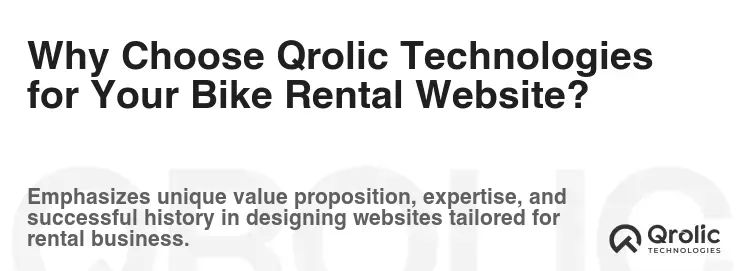
Now that you’re equipped with the knowledge of what makes a great bike rental website and the various options available, let’s talk about how Qrolic Technologies can help you build the perfect site for your business. At Qrolic, we don’t just build websites; we craft online experiences that drive growth and customer satisfaction.
Our Expertise in Bike Rental Website Design
We understand the unique challenges and requirements of bike rental businesses. Our experienced team of designers and developers is well-versed in creating websites that not only look great but also deliver results. Here’s why Qrolic Technologies stands out:
- Industry-Specific Knowledge: We have a deep understanding of the bike rental market. We know the features that work best, the user interface elements that improve the booking process, and how to position you as a leading provider in your area.
- Custom Design Solutions: We don’t believe in one-size-fits-all solutions. We work closely with you to understand your unique needs, brand, and vision. Then, we develop a bespoke website that is tailored to your specific requirements.
- Mobile-First Approach: We understand that a large portion of online traffic comes from mobile devices. Our websites are designed to be fully responsive and perform seamlessly on all devices, ensuring a great user experience across the board.
- Robust Booking Systems: We integrate powerful and user-friendly booking systems into our websites that simplify the rental process for your customers. From browsing bikes to selecting rental dates and completing payment, we make it as simple and streamlined as possible.
- Focus on User Experience: We design our websites with the end-user in mind. We prioritize intuitive navigation, clear call-to-actions, and a seamless overall experience to maximize your conversion rates.
- SEO Optimized Websites: We build our websites with SEO best practices in mind to ensure your website ranks highly in search engine results. This will drive more organic traffic and help you reach a wider audience.
- Ongoing Support: We don’t just launch your website and leave you to it. We offer ongoing website maintenance, support, and technical assistance to ensure your site is always running smoothly and effectively.
What We Offer
At Qrolic Technologies, we offer a comprehensive range of services to help you create the perfect website for your bike rental business:
- Custom Web Design: We create unique and visually stunning websites that are aligned with your brand and business goals.
- E-commerce Integration: We implement robust e-commerce features, including online booking, secure payment processing, and inventory management.
- Mobile Responsive Design: We ensure that your website is fully responsive and provides an optimal user experience on all devices.
- SEO and Digital Marketing: We help you optimize your website for search engines and develop a digital marketing strategy to boost your online visibility and drive more traffic.
- Ongoing Maintenance and Support: We provide ongoing website maintenance, technical support, and updates to ensure your website is always performing at its best.
- Integration with Third-Party Tools: We can integrate your website with various third-party tools such as Google Analytics, CRM systems, and more.
Our Process
Our web design process is thorough and collaborative, ensuring that you are involved every step of the way:
- Consultation: We start by discussing your goals, needs, and expectations in detail.
- Planning: We develop a detailed project plan, outlining timelines, deliverables, and milestones.
- Design: We create a visually stunning and user-friendly website design based on your branding and vision.
- Development: We develop your website using the latest technology and best practices, ensuring that it is fully functional and responsive.
- Testing: We rigorously test your website to make sure it works perfectly on all devices and browsers.
- Launch: We launch your website, ensuring a smooth transition and deployment.
- Ongoing Support: We provide ongoing website maintenance, updates, and support to ensure that your website is always performing at its best.
Let Qrolic Technologies Be Your Partner
Choosing a web design service is an important decision that can have a huge impact on your business. At Qrolic Technologies, we are committed to helping you create a website that is not only visually appealing but also drives growth, improves customer satisfaction, and increases your revenue. With our industry-specific knowledge, custom design solutions, and focus on user experience, we are the perfect partner for your bike rental business.
Visit our website at https://qrolic.com/ to learn more about our services and how we can help you transform your bike rental business with a professional and high-performing website. Contact us today for a free consultation!
